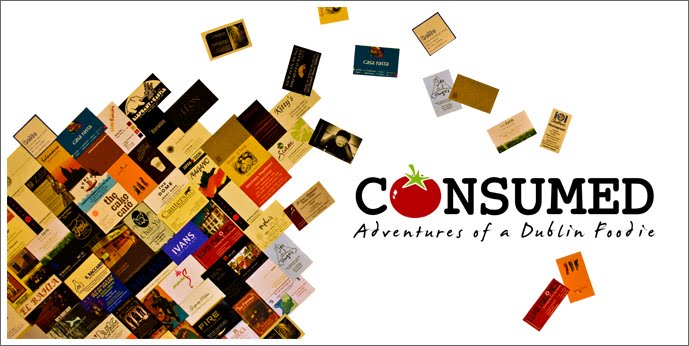Up until the last couple of days, black food colouring - and how to get it - was something of a serial enigma to me. I knew it existed, but always presumed you could only obtain some in a Fallon & Byrne-esque eclectic food market or from catering suppliers. Infrequent expeditions to find it always ended one of two ways: failure and presuming I’d have to resort to Ebay (ala liquid smoke), or eventual distraction from other obscure delectables in the various places I’d have been searching. Don’t get me wrong, I did actually care about getting my hands on some but any attempt to do so was always on a whim. In other words, it only ever popped into my head every so often and seldom stayed there.
What changed all of this was a recent spate of cookie baking that culminated in this recipe for black and white tuxedo cookies, which itself was inspired partly by what I imagined a tuxedo cheesecake to look like: inky black juxtaposed with creamy white. The finished product tasted good, but ever since publishing the recipe I’ve wondered if I could have made the dark dough mixture just that little, y’know, truer to the pure black colour that ‘tuxedo’ implies. Finding a way to achieve this was quickly becoming a matter of principle!
Fast forward two odd months and Rebecca was busy whipping up the first recipe for her very own burgeoning food blog. She had the red, yellow and blue food colouring out and I was decidedly unoccupied off to the other side. Suddenly, it hit me; combine the colours, just like you used to in junior infants! Whodathunk all of those years of scribbling on a sheet of paper with an entire crayon set until it was a blackish/brown mess would actually come in handy for a bit of culinary inspiration? Before you could say hey presto, I was filling up my first little phial of black food colouring. And that’s the beauty of it; it only takes a few seconds to perfect.
Makes approximately one 25ml bottle of food colouring
1 tsp red food colouring
1 tsp yellow food colouring
3 tsp blue food colouring
1 tsp yellow food colouring
3 tsp blue food colouring
Simply add each measure of food colouring into a small bowl or jug. Stir until properly mixed. To test the mixture, let one or two drops fall onto a kitchen towel. The more blue food colouring you add, the inkier it will be whilst less will yield a slightly more red/brown hue. Experiment a little and find exactly the right colour for the recipe you’re making.
The finished mixture is ideal for darkening the colour of chocolatey baked goods and a purely black icing. As with any other food colouring, there are any number of recipes it can be applied to but the first thing I personally will be doing with it is attempting what’ll hopefully be a rather sumptuous looking chocolate cake. Expect some news on that topic in the not too distant future!


I would love to see some fine examples of your cooking with this colouring!
ReplyDeleteHi, just stumbled across this blog now, looks fab, you can get black food colouring in kitchen complements in Dubli, and they do online shoppin, it is called liquorice, but it is black as the ace of spades, they have two brands I think, can't remember the names but they are pastes and come in little plastic tubs, now, back to what I was actually searching for!
ReplyDeleteThanks for the tip, it sounds good and I'll definitely have to look them up and see what else I can find! :-)
ReplyDeleteNice Blog : Food colour manufacturers specialize in producing safe, high-quality colors that enhance the visual appeal of food and beverages. They offer a wide range of natural and synthetic food colors used in confectionery, bakery, dairy, beverages, snacks, and packaged foods.
ReplyDelete